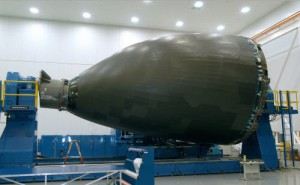Composites Take Flight
Composites are playing a larger and larger role in aircraft. At Boeing they have gone from a tiny proportion of the planes’ bodies in the late 1960s to
half the materials used in their construction today. So what are the benefits and what are the challenges that this offers?
Breaking Through Design Barriers
The key to these planes is strong composite materials, using carbon fibre to add strength to plastics. Lighter than the metals traditionally used in aircraft construction they ensure that the aircraft are still as strong, able to bear their own weight and survive the rigours of flight.
Working with composites opens up new options for designers and engineers. Any increase in options is good when trying to balance the interests of fuel efficiency, aerodynamics and reducing engine noise. For example, composites have allowed the creation of sweeping wing tips for improved fuel consumption.
Working with composites changes what constitutes a single part of a plane. Components can be made in different shapes and sizes, improving the aircraft’s structural integrity and reducing time and costs on assembly.
Saving Money and Saving the Planet
These sorts of efficiencies have two main benefits – one for the companies running the planes and one for the public good.
For the companies more efficient planes mean cost savings. Lighter craft need less fuel to fly, and aerodynamic efficiencies help with this. With fuel prices continuing their inexorable climb, anything the companies can do to cut these costs makes a huge difference.
The improved efficiencies of construction also create financial savings. Lighter parts are cheaper to transport. Innovations in parts design save money on fabrication and construction. The use of superior
composite tooling techniques leads to parts that fit better at a lower cost. For manufacturers and airlines alike, composites mean savings.
composite tooling techniques leads to parts that fit better at a lower cost. For manufacturers and airlines alike, composites mean savings.
These efficiencies don’t just save money – they also help save the planet.
Aircraft are significant causes of pollution due to the fuel they burn staying in the air. The lighter and more fuel efficient they are the less impact they have on the environment.
More than this, the light, innovative designs made possible by composites are paving the way towards solar powered aircraft. The
Solar Impulse plane, due to make a dramatic 25 day demonstration flight in 2015, is a solar powered aircraft built from the latest composites and environmentally friendly technologies. It opens up a world of possibilities for low cost, low impact flying in the future.
Solar Impulse plane, due to make a dramatic 25 day demonstration flight in 2015, is a solar powered aircraft built from the latest composites and environmentally friendly technologies. It opens up a world of possibilities for low cost, low impact flying in the future.
The Challenges of Composite Aircraft
The shift towards composites in aircraft of course comes with its own challenges.
During production having the right tools for the job is crucial. Aircraft are precision machines and small imperfections in their surfaces can lead to huge losses in efficiency. Meeting rigorous safety standards also demands a precision approach, and closer collaboration between aircraft manufacturers and
composite tooling designers will be necessary to reap the benefits that composites can bring.
composite tooling designers will be necessary to reap the benefits that composites can bring.
For the airlines using these planes new challenges also arise. Repair teams have to learn to work with new materials, and
Boeing in particular have worked hard to show that their composite aircraft can be successfully repaired. Small repairs can be achieved by bonding new layers over damage using heat and epoxy. Spare parts are being developed to bolt over other areas vulnerable to damage. But for larger scale damage custom repair jobs may be needed, requiring repair crews to have a greater understanding of the materials they are working with. Moving towards larger parts, while good for construction and reducing vulnerabilities in the plane, can make repairs harder, as the pieces being replaced are larger than before.
Boeing in particular have worked hard to show that their composite aircraft can be successfully repaired. Small repairs can be achieved by bonding new layers over damage using heat and epoxy. Spare parts are being developed to bolt over other areas vulnerable to damage. But for larger scale damage custom repair jobs may be needed, requiring repair crews to have a greater understanding of the materials they are working with. Moving towards larger parts, while good for construction and reducing vulnerabilities in the plane, can make repairs harder, as the pieces being replaced are larger than before.
Composites are clearly the future of aircraft construction. The potential benefits are huge, but as is often the case, so are the challenges.

